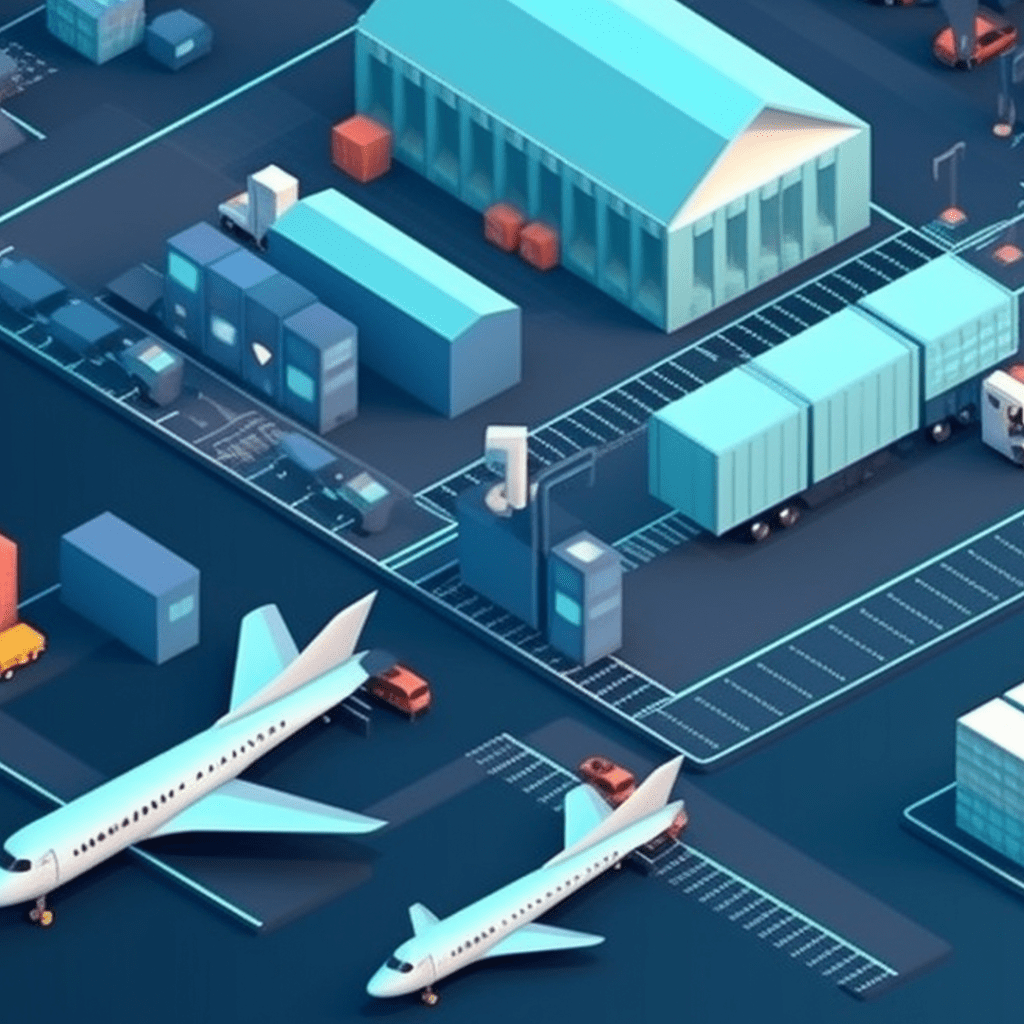In today’s fast-paced supply chain landscape, businesses are constantly seeking innovative solutions to streamline their operations and reduce costs. One such method gaining popularity is cross-docking in warehousing. In this blog, we’ll delve into what is cross-docking in warehousing, its benefits, and how it revolutionizes traditional warehouse operations.
Understanding what is cross-docking in warehousing

Cross-docking in warehousing is a logistics strategy where incoming goods from suppliers are unloaded from inbound vehicles (such as trucks or containers) and directly transferred to outbound vehicles with minimal or no storage in between. Instead of being stored in the warehouse, products move swiftly through the facility, significantly reducing handling and storage time.
Types of cross-docking in warehousing

Common types of cross-docking
Here are some common types of cross-docking:
1. Retail Cross-Docking:
– In retail cross-docking, products from suppliers are directly transferred to outbound trucks or containers for delivery to retail stores. This method helps retailers streamline their supply chains by bypassing the need for storage and quickly replenishing store inventory.
2. Manufacturing Cross-Docking:
– Manufacturing cross-docking involves the direct transfer of components or raw materials from suppliers to outbound trucks destined for manufacturing facilities. This allows manufacturers to maintain lean inventories and support just-in-time manufacturing processes.
3. Consolidation Cross-Docking:
– Consolidation cross-docking involves combining multiple smaller shipments into larger, more efficient loads for transportation to their final destinations. This helps reduce transportation costs by maximizing truck capacity and optimizing route planning.
4. Deconsolidation Cross-Docking:
– Deconsolidation cross-docking is the opposite of consolidation cross-docking. It involves breaking down larger shipments into smaller ones for distribution to multiple destinations. This allows for faster and more efficient distribution of goods to various customers or stores.
5. Opportunistic Cross-Docking:
– Opportunistic cross-docking occurs when unexpected opportunities arise to combine or split shipments based on real-time transportation or customer demand factors. This flexible approach enables businesses to respond quickly to changing market conditions and optimize their supply chain operations.
Each type of cross-docking offers unique benefits and is tailored to specific industry needs and supply chain requirements. By leveraging the appropriate type of cross-docking, businesses can enhance their operational efficiency, reduce costs, and improve customer service.
Pre-distribution cross-docking and Post-distribution cross-docking
What are the two types of cross-docking? Cross-docking operations can be categorized into two main types based on when the process occurs within the supply chain: pre-distribution cross-docking and post-distribution cross-docking. Each type serves distinct purposes and offers unique advantages for optimizing logistics and supply chain management.
1. Pre-Distribution Cross-Docking:
– Pre-distribution cross-docking involves the consolidation and sorting of inbound shipments shortly after they arrive at a distribution center or cross-docking facility. The goal is to quickly transfer products from incoming trailers or containers to outbound transportation vehicles without the need for long-term storage.
– Upon arrival, incoming shipments are sorted based on their destination and customer orders. Products are then cross-docked, meaning they are directly transferred from the receiving dock to the outbound shipping dock, often within the same facility or shortly thereafter. Minimal handling and storage time are involved in this process.
2. Post-Distribution Cross-Docking:
– Post-distribution cross-docking occurs after products have been distributed to regional distribution centers or retail locations. It involves the consolidation and sorting of products from multiple distribution centers or stores to fulfill customer orders or replenish inventory levels.
– In this scenario, products are cross-docked at a central hub or distribution center after they have been distributed to various locations. Incoming shipments from different distribution centers or stores are consolidated based on customer orders or inventory needs. The products are then sorted and loaded onto outbound transportation for final delivery to customers or replenishment of stock.
In summary, both pre-distribution and post-distribution cross-docking strategies offer valuable benefits for optimizing supply chain operations, reducing costs, and improving customer service. The choice between the two approaches depends on factors such as the nature of the products, distribution network complexity, and customer demand patterns.
Cross-docking in 3PL

What is cross-docking in 3PL? Cross-docking in the context of third-party logistics (3PL) refers to a logistics strategy where a third-party service provider, known as a 3PL provider, plays a central role in facilitating the cross-docking process. In this scenario, the 3PL provider acts as an intermediary between suppliers, manufacturers, and retailers to streamline the flow of goods through the supply chain.
Here’s how cross-docking works in 3PL:
1. Receiving Goods:
The 3PL provider receives inbound shipments from suppliers or manufacturers at their cross-docking facility. These shipments may consist of products, components, or materials destined for distribution to various locations.
2. Sorting and Consolidation:
Upon receipt, the 3PL provider sorts the inbound shipments based on their destination and customer requirements. Similar products or shipments intended for the same location are consolidated to create efficient outbound loads.
3. Cross-Docking Operations:
The sorted shipments are then transferred directly from the inbound receiving docks to the outbound shipping docks, with minimal or no storage in between. This process may involve sorting, labeling, and repackaging to prepare the shipments for immediate outbound transportation.
4. Outbound Distribution:
Once the shipments are cross-docked and prepared, they are loaded onto outbound trucks or containers for delivery to their final destinations. The 3PL provider coordinates the transportation logistics, ensuring timely and efficient delivery to customers or distribution centers.
5. Value-Added Services:
In addition to cross-docking, the 3PL provider may offer value-added services such as labeling, kitting, and quality inspection to further enhance the efficiency and effectiveness of the supply chain.
Overall, cross-docking in 3PL enables businesses to optimize inventory management, reduce transit times, and improve supply chain agility. By leveraging the expertise and resources of a 3PL provider, companies can streamline their logistics operations and focus on their core business activities.
Conclusion
In conclusion, cross-docking in warehousing offers a strategic approach to optimize supply chain operations, reduce costs, and enhance efficiency. By minimizing storage time and maximizing the flow of goods, businesses can streamline their operations, improve order fulfillment, and gain a competitive edge in today’s dynamic marketplace.
Know the answer to what is cross-docking in warehousing with Galaxy Freight! Our expert team ensures seamless operations and timely deliveries, optimizing your supply chain for success. Contact us today to streamline your warehousing processes and experience the benefits of cross-docking firsthand.



